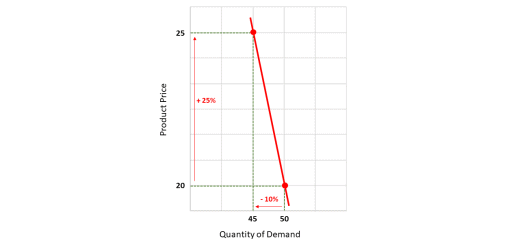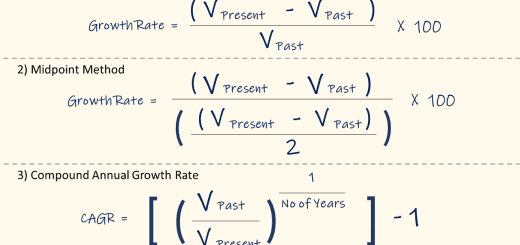What is Semi-Monthly Payroll? Definition, Schedule, Calculation, Pros, Cons
Table of Contents:
- What is Semimonthly Payroll?
- Difference of Semi-Monthly Payroll, Bi-Weekly Payroll, and Bi-Monthly Payroll
- What are the Key Highlights of Semimonthly Payroll when Compared with Other Payrolls
- Pay Period & Pay Days
- Example of Calculation
- Payroll Calendar
- Benefits
- Drawbacks
- What is a Pay Period
- Other Types of Payroll Schedules (Methods) Available
- How to Choose the Best Payroll Schedule for My Company?
- Does Semimonthly Payroll Most Popular in the US?
- Pay Frequency Requirements in the US?
What is Semimonthly Payroll?
Semi-monthly payroll is when a business pays the employees twice a month, usually on the 15th and last day of the month. The payment generally happens out on the proceeding Friday if these dates fall on a weekend. Furthermore, employees’ annual salaries are split into 24 pay periods, results 24 equal payments throughout the year.
To cater to the semimonthly payroll, the company should trace the hours worked by each non-exempt employee who is allowed minimum wage and overtime pay if they work more than 40 hours per week. In some months, the weeks can get split into two pay periods and the overtime calculation payment will be somewhat complex. As an example, if the 15th of the month falls on Wednesday, there will be two pay periods before Wednesday and after Wednesday. Time tracking of non-exempt employee hours is important and complex in a semimonthly payroll schedule.
Difference of Semi-Monthly Payroll, Bi-Weekly Payroll, and Bi-Monthly Payroll
Following table presents the key differences in Semi-Monthly, Bi-Weekly, and Bi-Monthly Payroll.
| Semimonthly Payroll | Biweekly Payroll | Bimonthly Payroll | |
|---|---|---|---|
| Pay Period | Twice A Month | Every Other Week | Once Every Two Months |
| Number of Payments Per Year | 24 | 26 | 12 |
| Number of Payments Per Month | 2 Payments Per Month | For 10 Months 2, For 2 Months 3 | 1 Payment Per 2 Months |
| Payment Usually Happens on a Specific Day of a Week | No | Yes | No |
| Practical for Non-Exempt Employee Payment | No / Difficult | Yes | No / Difficult |
| Payment Amount Per Pay Period As Example. Assumption: Annual Salary of $78,000 | $78,000 / 24 = $3,250 | $78,000 / 26 = $3,000 | $78,000 / 12 = $6,500 |
| Best Advantage As an Employee | Payment Method is Easy to Understand | Employees Feel More Consistent | Paycheck Amount will be Comparatively High |
| Biggest Disadvantage As an Employee | Not Practical with Non-Exempt Employees | Paycheck will be Comparatively Less | Difficulty in Personal Budgeting |
What are the Key Highlights of Semimonthly Payroll when Compared with Other Payrolls
1. Company can manage the payroll cash flow well
The company is paying the employees 2 times a month in semi-monthly payroll. Compared with other methods, it is quite easy for the company to manage the receivables accordingly and link those with the employee payments. As an example, if an employee receives $4,000 as a monthly payment, in semi-monthly payment he/she will receive two paychecks per month for each $2.000.
2. Removes the odd day and leap year days
The bi-weekly payroll method has issues with odd days and leaps year days. But the semi-monthly payroll does not have odd days since the payment happens on the middle business day of a month and the last business day of a month, despite whether it is an odd or even day. Also, it eliminates the leap year days issue since both payments happen within the calendar month.
3. Easy payroll administration
When compared with other payroll methods, it is more easier administration of semi-monthly pay in terms of payroll administration. There are fewer pay periods and it is simple as well. Hence the company can save the payroll processing cost.
4. Easier to calculate accruals
Semi-monthly payroll accruals are uncomplicated to proceed with, compared with other payroll methods like bi-weekly pay and bi-monthly pay. The company payroll department has to divide the agreed annual net payment by 24 and the amount is the net payment of each payroll.
Pay Period & Pay Days of Semimonthly Payroll
The pay period of semimonthly payroll is 24 times per year. It is a simple math to calculate with 12 months per year multiplied by 2 paydays per month = 24 paydays. This also means that semimonthly payroll produces 24 consistent earnings per year.
Pay dates of semimonthly payroll are commonly the 1st and 15th of each month or the 15th and the last day of each month.
Example of Semimonthly Payroll Calculation
As an example, let’s assume that an employee joined at an annual salary of $96,000. There are 24 pay periods of semimonthly payroll. Hence for each pay, the employee will get $4,000 ($96,000 / 24). The employee’s paysheet will indicate the salary of $4,000 on each semimonthly payday. The employee will get $8,000 each month (2 Pay Days per month hence $4,000 X 2 = $8,000).
Payroll Calendar of Semi-Monthly Schedule
Semimonthly payrolls usually occur on the same dates each month. Most common are the 15th and the last day of the month. Here’s a semimonthly payroll calendar for 2024 & 2025 years:
2024 Semimonthly Payroll Calendar:
- January:
- Pay Date 1: January 15
- Pay Date 2: January 31
- February:
- Pay Date 1: February 15
- Pay Date 2: February 29 (Leap year)
- March:
- Pay Date 1: March 15
- Pay Date 2: March 31
- April:
- Pay Date 1: April 15
- Pay Date 2: April 30
- May:
- Pay Date 1: May 15
- Pay Date 2: May 31
- June:
- Pay Date 1: June 15
- Pay Date 2: June 30
- July:
- Pay Date 1: July 15
- Pay Date 2: July 31
- August:
- Pay Date 1: August 15
- Pay Date 2: August 31
- September:
- Pay Date 1: September 15
- Pay Date 2: September 30
- October:
- Pay Date 1: October 15
- Pay Date 2: October 31
- November:
- Pay Date 1: November 15
- Pay Date 2: November 30
- December:
- Pay Date 1: December 15
- Pay Date 2: December 31
2025 Semimonthly Payroll Calendar:
- January:
- Pay Date 1: January 15
- Pay Date 2: January 31
- February:
- Pay Date 1: February 15
- Pay Date 2: February 28
- March:
- Pay Date 1: March 15
- Pay Date 2: March 31
- April:
- Pay Date 1: April 15
- Pay Date 2: April 30
- May:
- Pay Date 1: May 15
- Pay Date 2: May 31
- June:
- Pay Date 1: June 15
- Pay Date 2: June 30
- July:
- Pay Date 1: July 15
- Pay Date 2: July 31
- August:
- Pay Date 1: August 15
- Pay Date 2: August 31
- September:
- Pay Date 1: September 15
- Pay Date 2: September 30
- October:
- Pay Date 1: October 15
- Pay Date 2: October 31
- November:
- Pay Date 1: November 15
- Pay Date 2: November 30
- December:
- Pay Date 1: December 15
- Pay Date 2: December 31
2024 and 2025 February’s pay dates differ due to the leap year in 2024. Also, for months with 31 days, the pay date remains the same, while for months with 30 days, the last day of the month is the pay date.
Benefits of Semimonthly Payroll as an Employee
An employee can benefit from semimonthly payroll as follows,
- Employees can manage their monthly expenses more easily because there are two payments received per month on the designated paydays.
- New employees may have to wait a month or more to get their first paycheck on the monthly payroll. But in semimonthly, new employees can get their first payment more quickly.
Benefits of Semimonthly Payroll as an Employer
An employer can benefit from semimonthly payroll as follows,
- Accounting cost is low in a semimonthly payroll schedule.
- The semimonthly payroll schedule is efficient since there are two payrolls per month to prepare. Also, there is less need for month-end adjusting entries.
- The company usually prefers to set the semimonthly schedule if they pay their employees a set salary. The company can pay the same amount of money on each payday twice a month.
Drawbacks of Semi-Monthly Payroll
1. Employees could be confused with the method due to a lack of consistency
In the weekly or bi-weekly payroll processing method, the employee will get the payment on a given day within the week (e.g. Friday). But in the semi-monthly method, it could be any day within the week. Hence, the employee could be confused with the processing.
2. Not practical to implement with non-exempt employees.
Non-exempt employees are entitled to a minimum amount of compensation and on top, they will be entitled to overtime pay when they work more than agreed hours per week. It is not practical to implement semi-monthly payroll with non-exempt employees since the payroll period could start/end within the middle of the week (e.g. 15th and last day of the month could be any date within the week). Hence it is difficult to pay non-except employees using the semi-monthly payroll method.
3. Some local states do not allow semi-monthly payroll method
Some states in the US and other countries do not allow semi-monthly payroll methods. As an example, in New Hampshire, employers must pay employees wages on a weekly or bi-weekly schedule. Semi-monthly and monthly pay frequencies must be approved by the New Hampshire Department of Labor (NHDOL).
4. New employees have to wait around 2 weeks to receive the first paycheck
Unlike the weekly payroll method which pays employees every week, the semi-monthly payment happens around 2 weeks. The newly joined employee has to wait for around 2 weeks if he/she joins at the beginning of the month.
What is a Pay Period
A pay period refers to the specific time-frame over which an employer calculates and records the work hours of employees and their wages or salaries earned during that period. Pay periods can vary depending on the employer’s policies and practices, but they typically occur on a weekly, bi-weekly (every two weeks), semi-monthly (twice a month), or monthly basis.
Employees report their hours worked during each pay period and employers calculate their earnings based on the hourly rate or salary. Pay periods are important for both employers and employees to ensure accurate compensation and record-keeping. Also it helps employers to manage payroll processing efficiently and comply with labor laws regarding wage payments and reporting.
Other Types of Payroll Schedules (Methods) Available
1. Bi-Monthly Payroll Schedule
Bimonthly payroll means that the company pays its employees once every two months. Employees in bi-monthly pay receive a salary every two months (six times a year). Bimonthly pay is when an employer pays the employees once every two months. Bimonthly pay contains 6 pay periods per year (Every calendar year has 12 months, hence 12/2 = 6).
Pay day of Bimonthly Payroll is usually the last day of two months. For the November and December months, the payday usually is 31st December. But it can vary based on the company policies.
2. Bi-Weekly Payroll Schedule
Biweekly payroll is when employees receive their pay every other week on an agreed day. There are 26 payments applicable for bi-weekly payroll, usually twice a month.
The entire year will be split into 26 separate pay periods in a biweekly schedule. Hence the employees get paid every two weeks instead of every week. In some months, the employees will get paid three times in one month with the payment schedule. There are always two months each year in which three paychecks are distributed and the other 10 months have two paychecks distributed.
3. Weekly Payroll Schedule
Weekly payroll means employees are paid once every week on a specific day. This results 52 payments per calendar year. Friday is the most common day which the payment happens.
Payroll administrators can easily calculate the overtime with the weekly pay schedule since the workweek is the same as the pay period. Employees also can verify the overtime payment easily since calculation considered on weekly basis.
How to Choose the Best Payroll Schedule for My Company?
Choosing the best payroll schedule for your company depends on various factors including your company’s cash flow, the frequency of your employees’ pay, administrative efficiency, and employee preferences. Here are some steps and tips to help you choose the most suitable payroll schedule,
- Assess your cash flow: You have to consider your company’s financial situation and determine how frequently you can afford to pay your employees. A more frequent payroll schedule, such as weekly or bi-weekly, may require a more consistent cash flow compared to a monthly or semi-monthly schedule.
- Consider employee preferences: You have to consider the preferences of your employees when choosing a payroll schedule. Some may prefer more frequent paychecks to better manage their finances, while others may prefer less frequent paychecks if they are used to monthly budgeting.
- Evaluate administrative efficiency: Consider the administrative workload involved in processing payroll. A more frequent payroll schedule may require more time and resources for payroll processing, whereas a less frequent schedule may be more efficient administratively.
- Review legal requirements: Make sure to comply with federal, state, and local labor laws regarding payroll frequency. Some jurisdictions may have specific requirements regarding the minimum frequency of paychecks. As example, in the United States, payroll schedules must comply with federal, state, and local labor laws
- Test different schedules: You can consider testing different payroll schedules on a trial basis to see which one works best for your company and employees, if possible. This can help you assess the impact on cash flow, administrative efficiency, and employee satisfaction.
- Consult with professionals: Consider consulting with payroll experts or financial advisors who can provide insights and recommendations based on your company’s specific needs and circumstances.
Ultimately, the best payroll schedule for your company will depend on a combination of factors, and it’s important to weigh these factors carefully to make an informed decision that meets the needs of both your company and your employees.
Does Semimonthly Payroll Most Popular in the US?
According to the U.S. Bureau of Labor Statistics, The Semimonthly payroll is the 3rd most popular payroll in the USA with an estimated 19% of U.S. private establishments paying their employees.
Most companies in the USA choose a combination of payrolls, using the semimonthly approach for fixed salaried employees and a biweekly payroll for hourly employees.
Pay Frequency Requirements in the US?
According to CPA Practice Advisor, there are no pay frequency requirements at the American federal level. But some U.S. states have specific pay frequency requirements as following examples,
In New Hampshire, employers must pay employees wages on a weekly or bi-weekly schedule. Semi-monthly and monthly pay frequencies must be approved by the New Hampshire Department of Labor (NHDOL).
In California and Michigan, the frequency of pay depends on the occupation. In California, wages must be paid at least twice during each calendar month on the days designated as paydays (with some exceptions).
Read More:
- Semi-Monthly Payroll
- Bi-Weekly Payroll
- Bi-Monthly Payroll
- Differences of Payroll Methods


